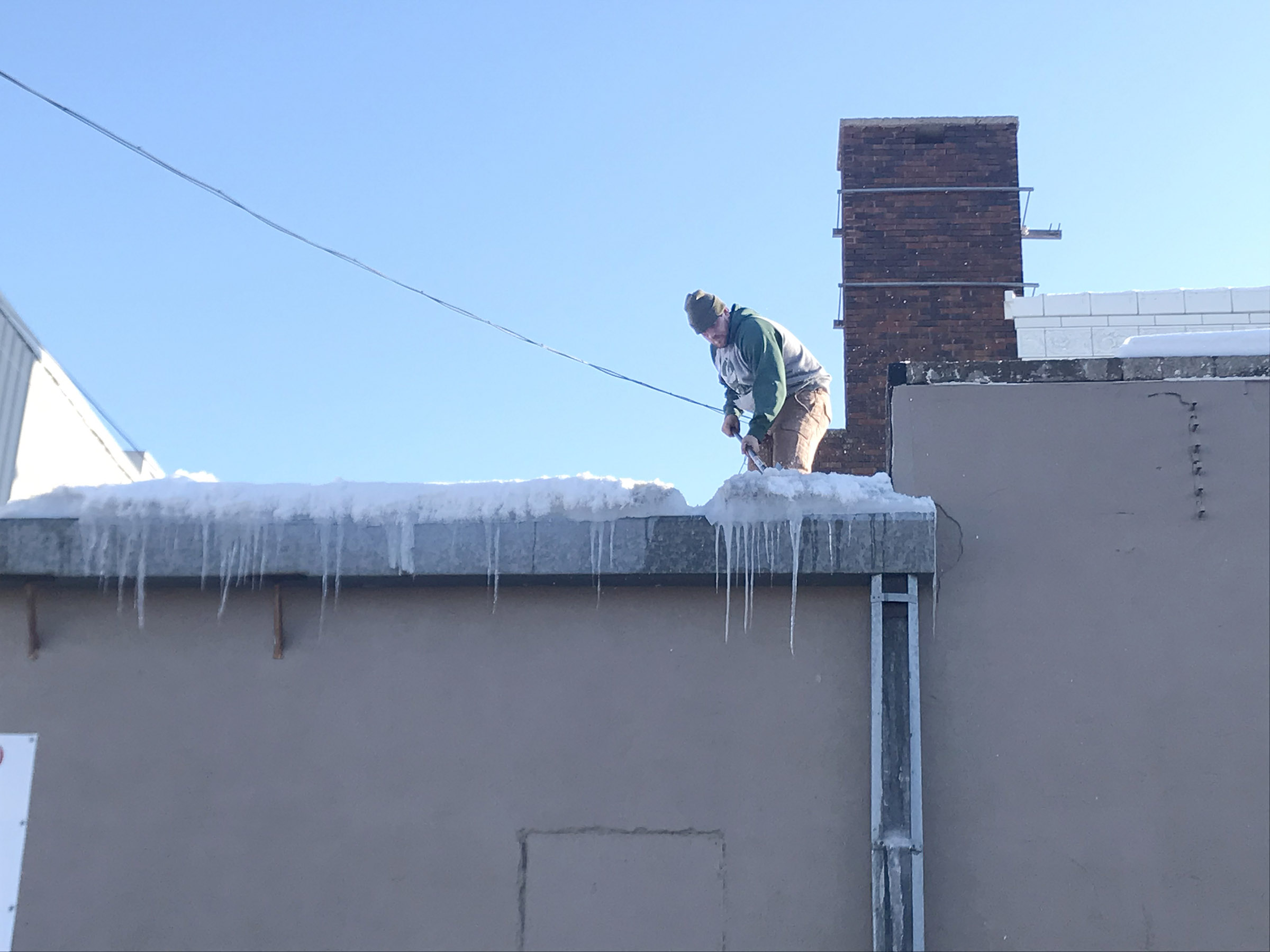 ,
, 
Local public works officials took advantage of Monday’s thawing temperatures to catch up with snow removal and prepare for possible flooding.
“We spent all day clearing storm gutters to get ready for the two inches of rain we’re supposed to get,” Luverne public works employee Matt McClure said Monday.
He and his co-workers were putting in extra hours to clear frozen slush from alleys and curbs to get ahead of Mother Nature.
These efforts will go a long way toward protecting homes and businesses from flooding, but property owners are encouraged to also be proactive.
Community leaders fear that a two-inch downpour could immediately produce street flooding and road washouts, since a foot-deep snowpack remains atop frozen soil, leaving nowhere for water to go.
Lauren Mellenthin is the emergency preparedness coordinator at Southwest Health and Human Services, and she shared information Monday that she hopes will reach the general public.
“With all of the snow that we have gotten and the rain, it is a good time to start preparing your home before the flooding starts,” Mellenthin said.
She recommends that homeowners:
•Assemble an emergency preparedness kit (see the sidebar information)
•Create a household evacuation plan that includes your pets.
•Keep insurance policies, documents and other valuables in a safe-deposit box. Keep them in a safe place where you can easily access them.
•Consider buying flood insurance. “Did you know that just 1 inch of water can cause $25,000 of damage to your home?” Mellenthin said. (See www.floodsmart.gov/why/why-buy-flood-insurance)
•Buy and install sump pumps with back-up power.
•Determine whether your home, school or work is in an area likely to flood.
“If and when flooding does happen in your area, never drive through flooded streets,” Mellenthin said quoting the public safety motto: “Turn around; don’t drown.”
She said more than 50 percent of flood-related deaths are due to someone driving or walking into floodwaters.
The Rock County Sheriff’s Office works with the Rock County Emergency Management Office and area city leaders to alert residents of dangerous weather conditions like flooding.
Residents are encouraged to sign up for local alerts through Nixel by texting 888777 and then 56156.
“This is great information that also includes National Weather System alerts for our area,” said local emergency management director Kyle Oldre.
He also asked that residents work with emergency management officials to communicate problems as they’re discovered.
“If you do come across road flooding, please report it to 283-5000, so barricades can be placed and if need be we can reroute first responders.”
Other information is available at:
•redcross.org/content/dam/redcross/atg/PDF_s/Preparedness___Disaster_Recovery/Disaster_Preparedness/Flood/Flood.pdf
•cdc.gov/disasters/floods/readiness.html
•redcross.org/get-help/how-to-prepare-for-emergencies/types-of-emergencies/flood.html
•ready.gov/floods
•weather.gov/safety/flood-before
What’s in your emergency evacuation kit?
According to the American Red Cross, a basic emergency survival kit should include:
•Water — one gallon per person per day (a three-day supply for evacuation, a two week supply for a home).
•Non-perishable food items (three-day supply for evacuation, two-week supply for home)
•Flashlight and batteries.
•Battery-powered or hand-crank radio (NOAA Weather Radio, if possible)
•A well-equipped first aid kit.
•Medications (seven-day supply) and medical items
•Multi-purpose tool
•Sanitation and personal hygiene items
•Copies of personal documents (medication list and pertinent medical information, proof of address, deed/lease to home, passports, birth certificates, insurance policies)
•Cell phones with chargers
•Family and emergency contact information
•Extra cash
•Emergency blanket
•Map(s) of the area
More information and advice is available at redcross.org.



